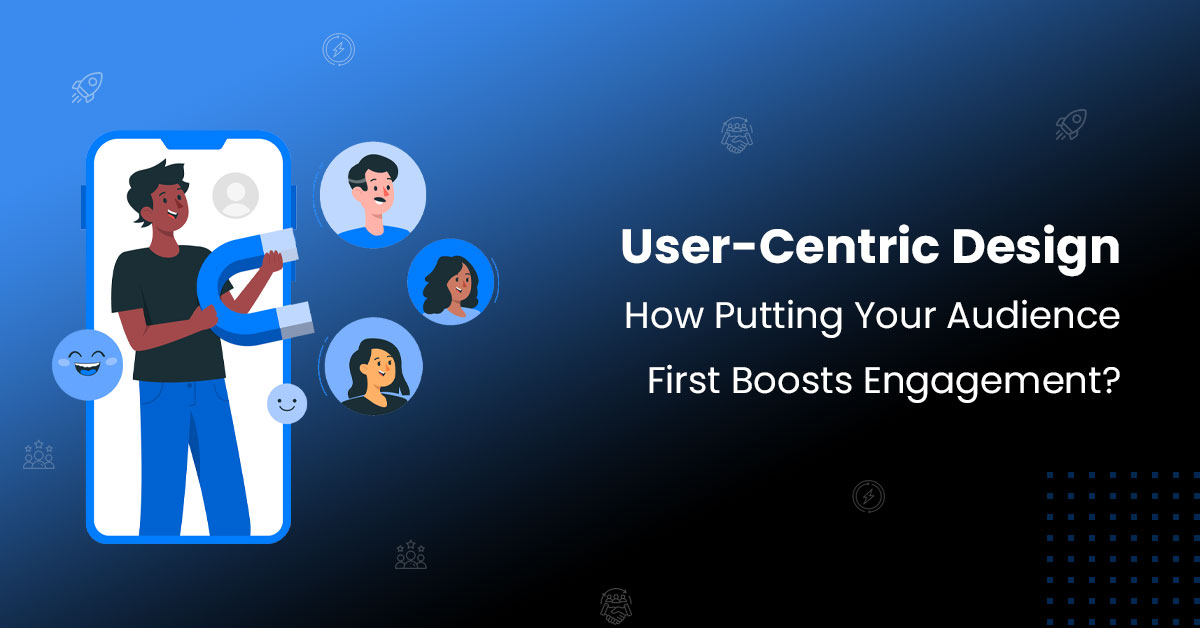User-Centric Design: How Putting Your Audience First Boosts Engagement 

User engagement is a critical component that determines the success of any product or service in the ever-evolving landscape of digital platforms. With the popularity of user-centric design growing, companies are realizing how crucial it is to prioritize their audience to increase engagement. This method puts end users at the center of the design process, guaranteeing that products meet customer expectations. It is based on human-centered design and a customer-centric attitude. We’ll go over the essential components of user-centric Web Design and how the Responsive design has become essential in the age of varied devices and screen sizes.
Understanding User-Centric Design
User-centric design is centered on developing experiences and products that address the requirements, preferences, and actions of end-users. It takes a comprehensive approach, covering a range of phases from original conception to ultimate execution. User-centric design is all about having an empathy-driven understanding of the target user base so that the end product fits the user’s expectations perfectly.
User Research: User-Centric Design Foundation
The basis of user-centric design is user research. Designers and developers can acquire valuable insights into user habits, motives, and pain points by doing comprehensive research. Businesses can improve the overall user experience (UX) by customizing their goods to meet unique user needs by studying their target demographic. By taking a proactive approach, the company greatly increases customer happiness and strengthens the bond between the product and its user.
Responsive Design: Meeting Users Where They Are
Responsive design has become essential in the age of varied devices and screen sizes. Research indicates that 73.1% of web designers identify non-responsive website design as a leading factor causing audiences to abandon a website. Products that are designed with the user in mind are visually appealing and also work well on a variety of devices. A responsive design ensures a smooth and consistent user experience regardless of the device used to view a website on a desktop, tablet, or smartphone. This adaptability enhances usability and accessibility, key factors in keeping users engaged.
Testing Usability: Improving the User Experience
User-centric design emphasizes usability testing as a means of continuous improvement. By gathering feedback from real users, businesses can identify potential pain points and areas for enhancement. The ultimate result will be in line with user preferences and expectations, thanks to this continuous process. Usability testing is essential for improving user interfaces, making navigation more efficient, and optimizing overall user satisfaction.
Customer-Centric Approach: Going Beyond Design
User engagement includes all of a customer’s interactions with a brand, not just the design stage. Taking a client-centric approach means taking into account the customer journey from awareness to purchase and beyond
By focusing on the complete customer experience, companies can foster enduring bonds with their audience and improve their client experience, hence promoting advocacy and brand loyalty.
The Role of Keywords in User-Centric Design
Another effective strategy to improve customer perception is to strategically include keywords associated with user-centric design in interfaces and content. A more relevant and user-friendly experience can be produced by being aware of the terminology and language used by your audience. This enhances search engine optimization while guaranteeing that visitors can locate, comprehend, and interact with the content or product with ease.
The Impact on Audience Engagement
To thrive in any competitive online landscape, businesses must successfully perform a website redesign to enhance user experiences and boost audience engagement. Customers tend to spend more time on platforms and exhibit higher conversion rates when they feel emotionally connected to goods and services that align with their needs. Positive user experiences produced by a user-centric strategy spread via referrals and word-of-mouth, resulting in organic growth and an expanded user base.
Elevating Engagement through User-Centric Design
With so many alternatives available in the digital world, user-centric design stands out as a shining example of user-focused innovation. Businesses may provide goods and experiences that meet but also surpass customer expectations by putting the wants and requirements of their audience first. Increased audience engagement is a result of the combination of user research, responsive design, usability testing, and a customer-centric strategy. Using a custom web development services that adopts top-notch user-centric design is more than simply a strategy in a world where the user is king. It’s a commitment to delivering outstanding user experiences and creating enduring relationships with the audience.





